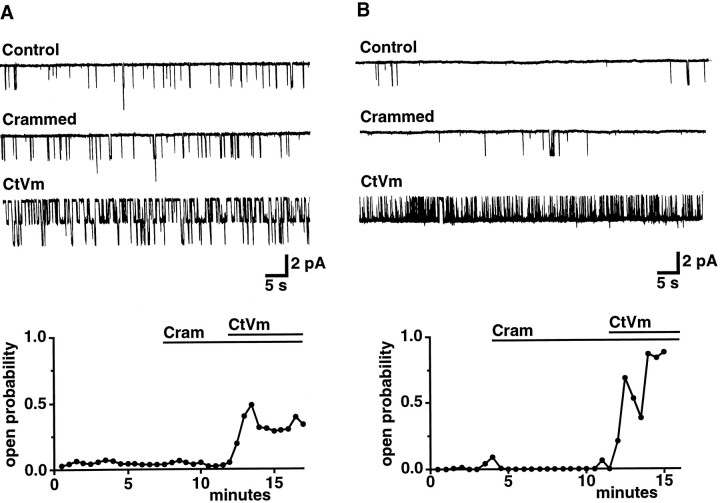Fig. 4.
Effect of CtVm on cation channels in either a continuously active (A) or bursting (B) gating mode. Cation channels were identified and characterized by excising patches into intracellular solution [containing (in mm): 500 K-aspartate, 70 KCl, 0.77 CaCl2, 1.2 MgCl2, 10 HEPES, 11 glucose, 0.77 EGTA, and 10 glutathione, pH 7.3 (KOH)], and then the channels were reinserted (“crammed”) into bag cell neurons before application of CtVm (100 μg/ml). In both A andB, traces show representative activity recorded at a holding potential of −60 mV in control conditions, after cramming, and after application of CtVm, as indicated. The time dependence of the changes in Po are shown in the plots below. Data points represent the Po measured for successive 30 sec intervals. For the patch shown in A, which appeared to contain two channels, the plottedPo is the sum of thePo obtained at each level divided by two. Bursting and continuously active channels were distinguished by the presence of long-lived closures in the activity of bursting channels, as described previously (Wilson and Kaczmarek, 1993). A reasonable fit of the closed-time distribution of bursters requires the use of additional exponentials that describe the long-lived closures. These exponentials are not required when fitting the closed-time distributions of continuously active channels.

